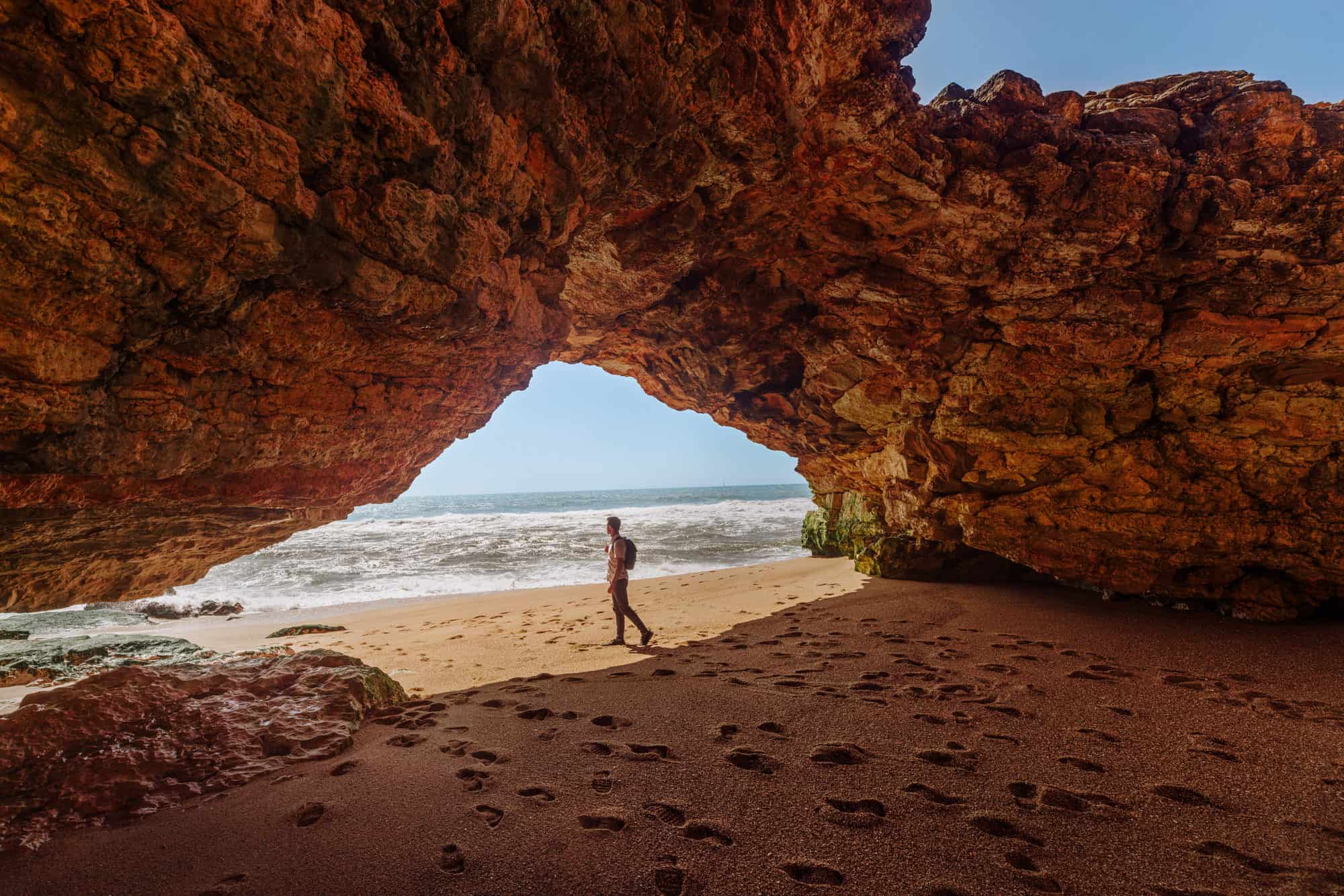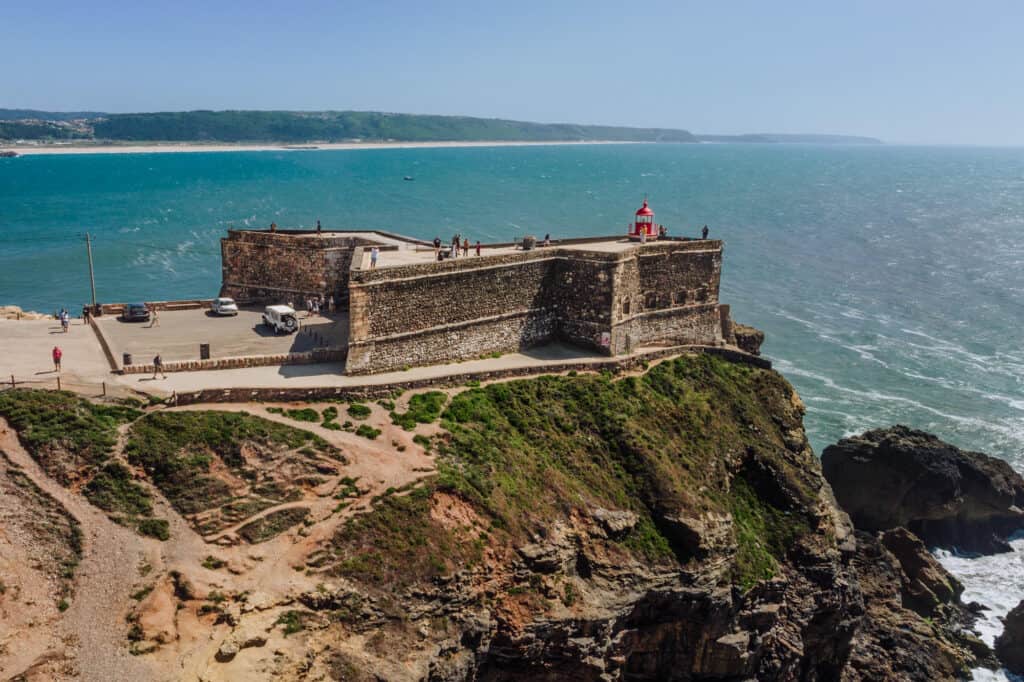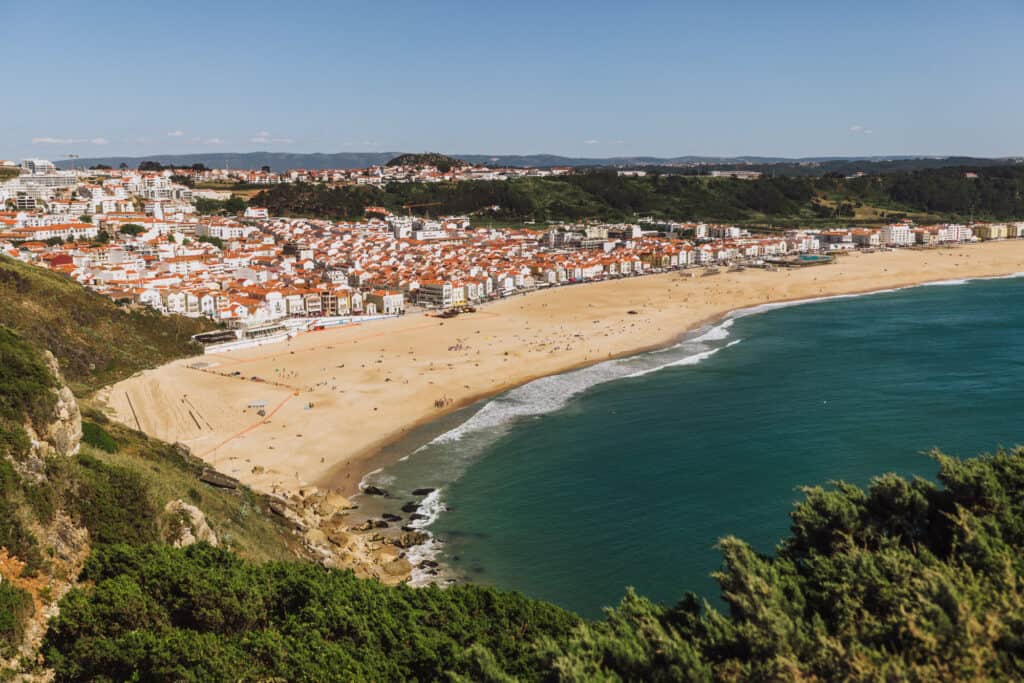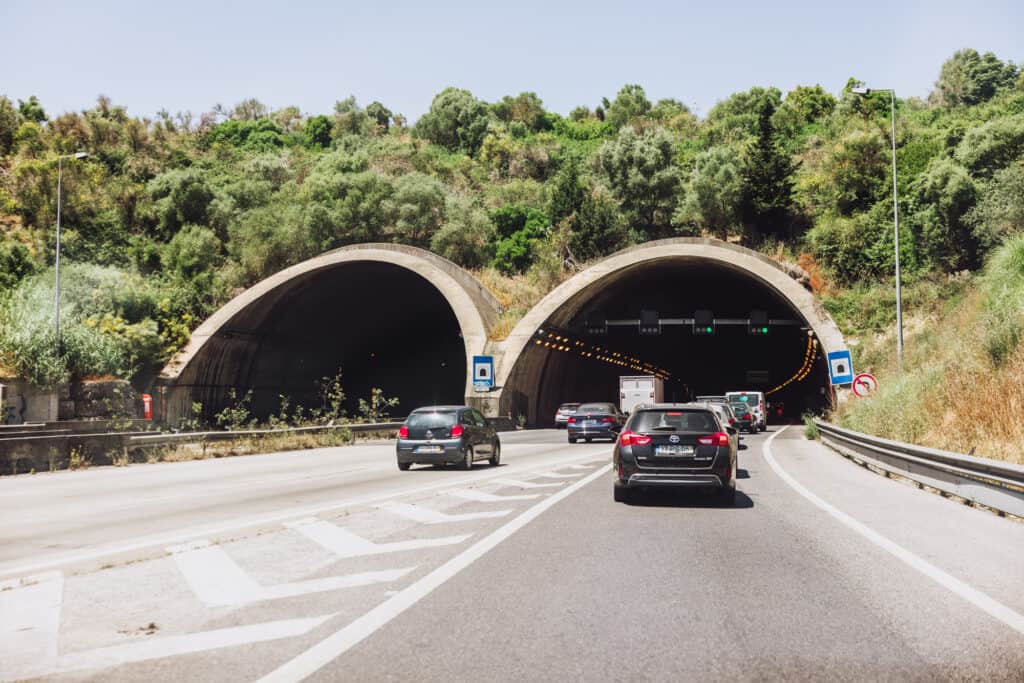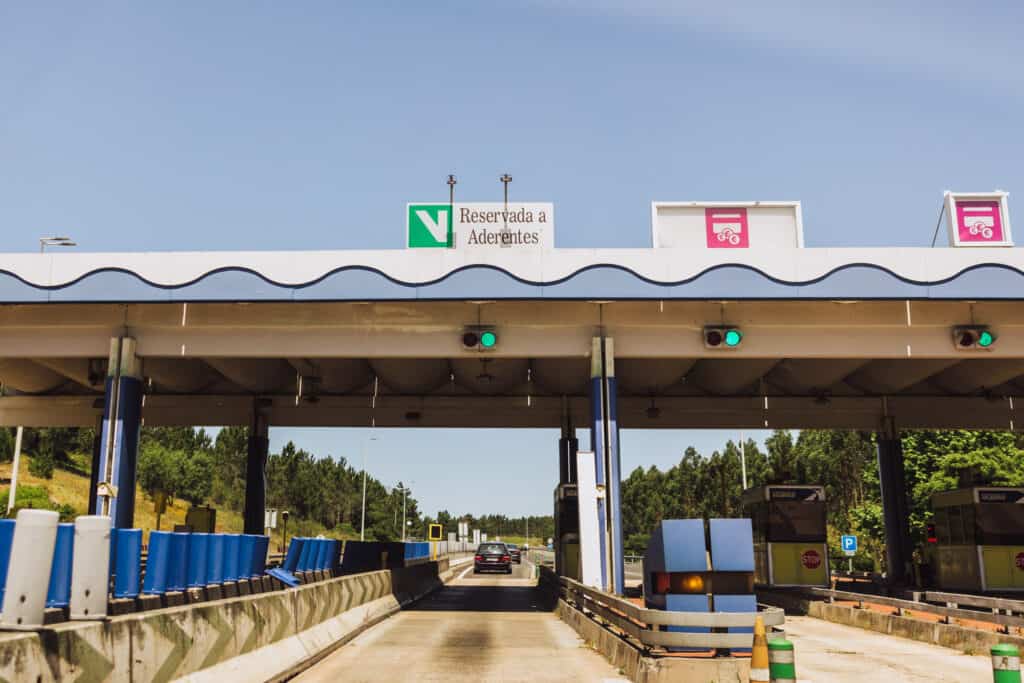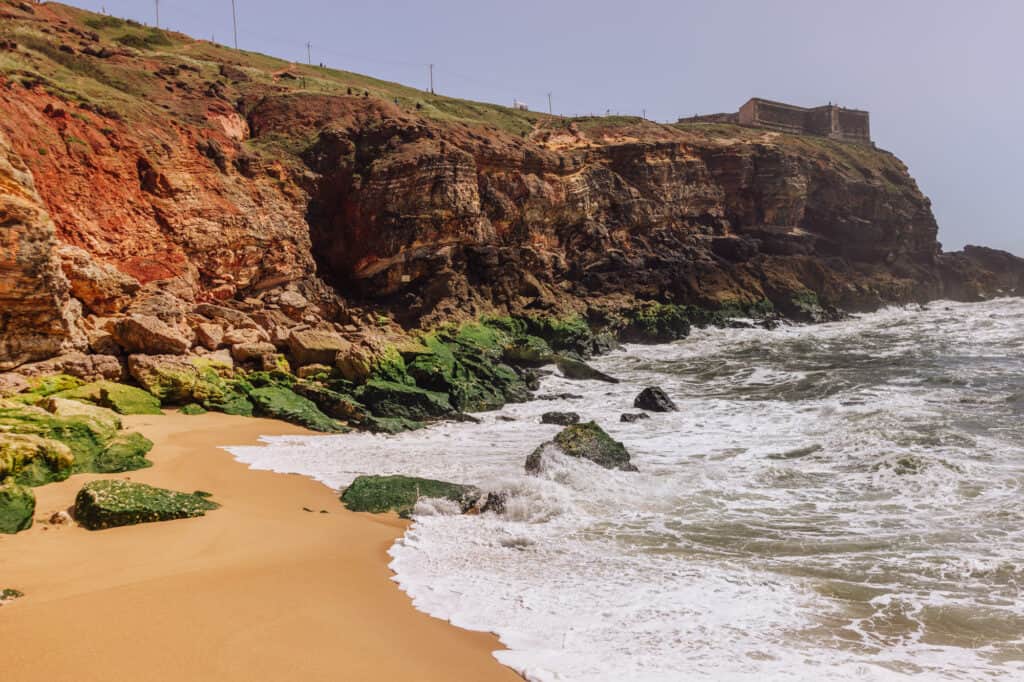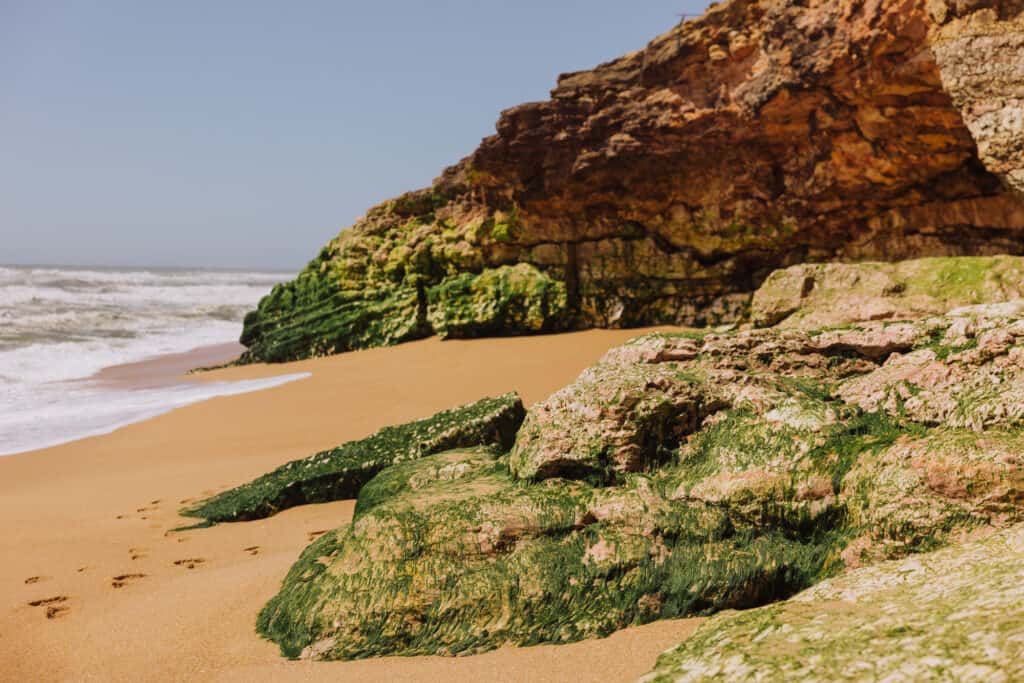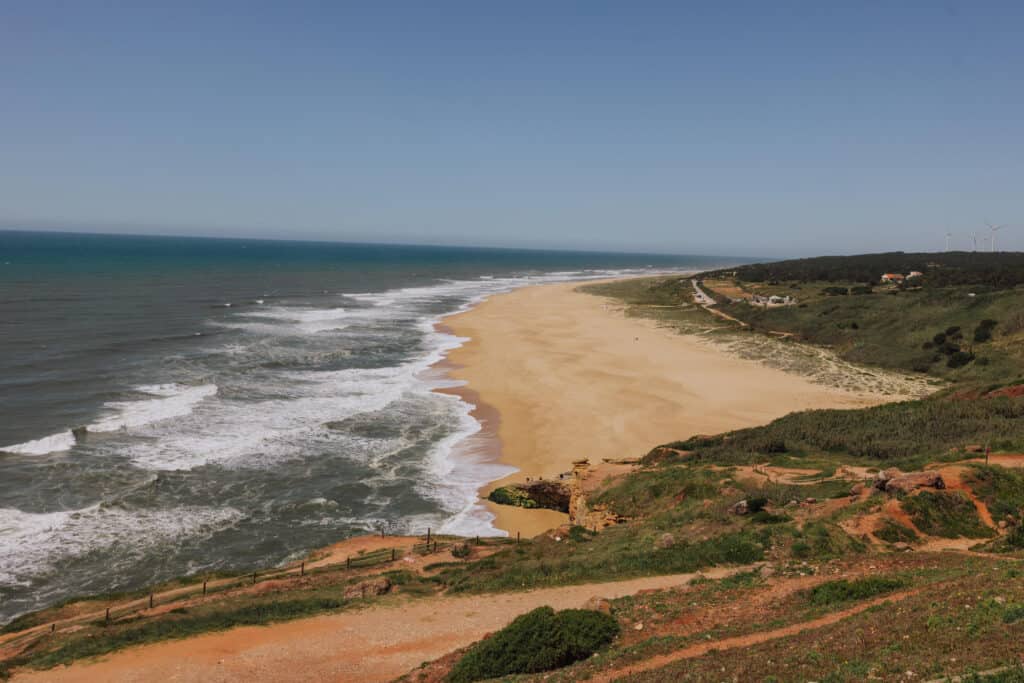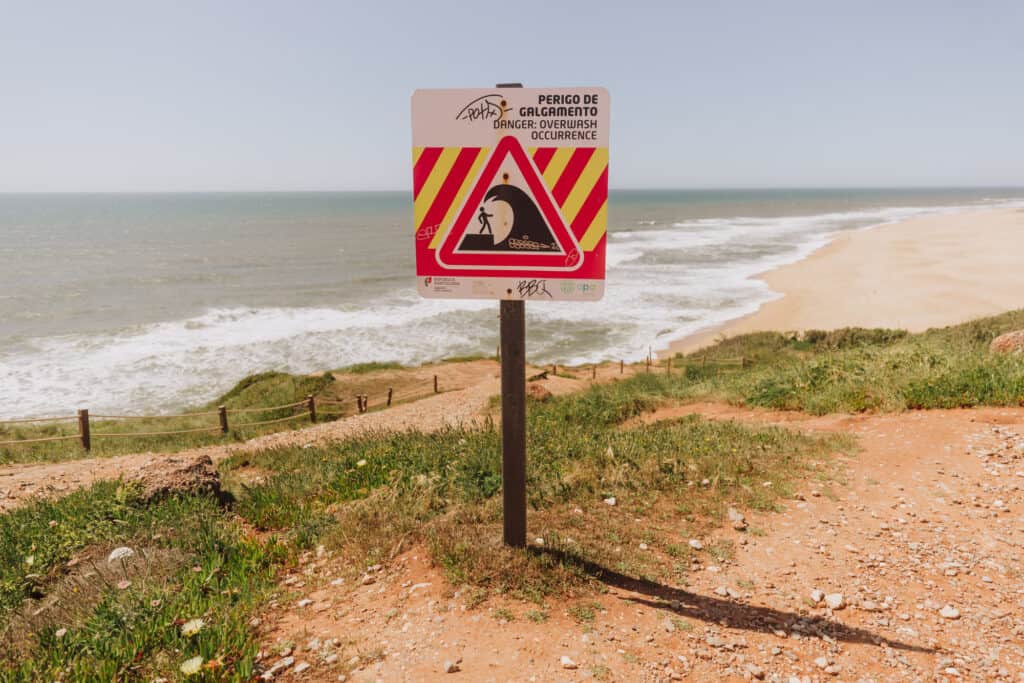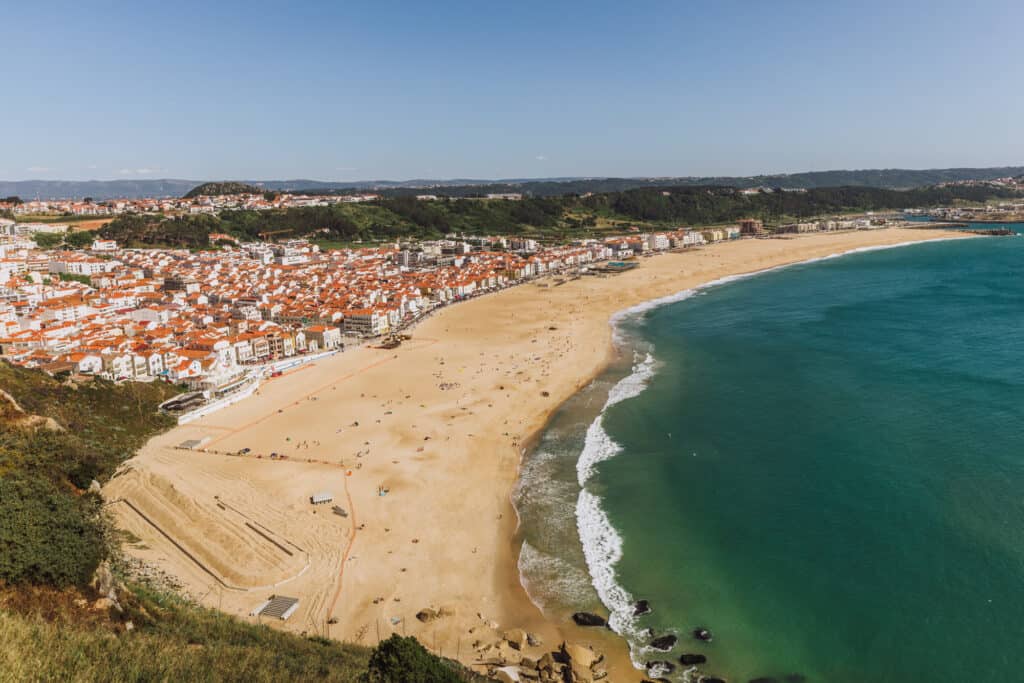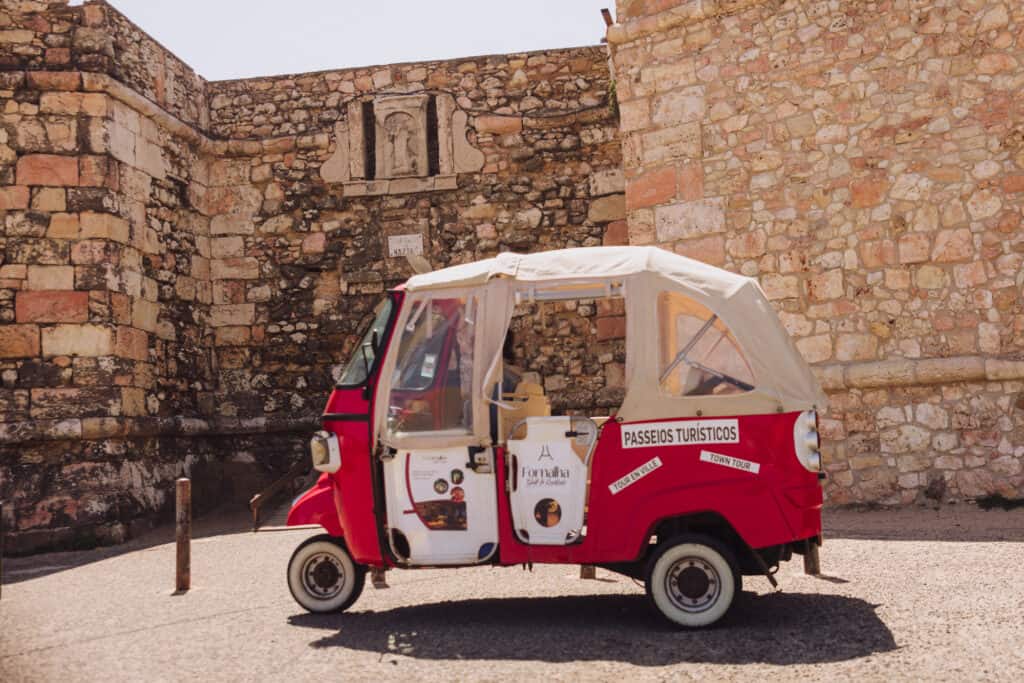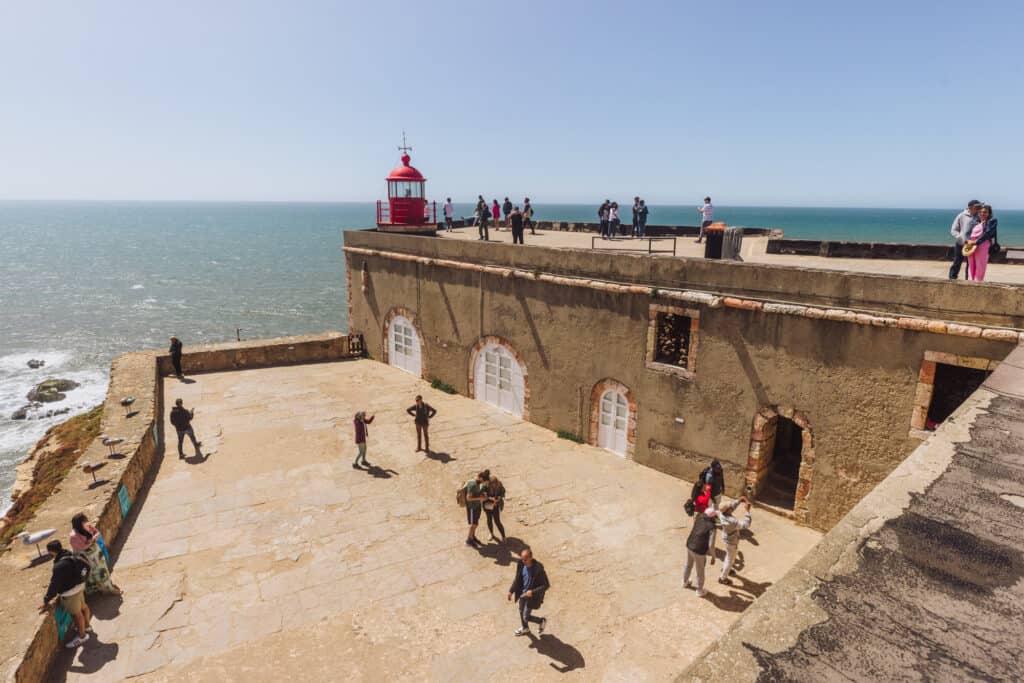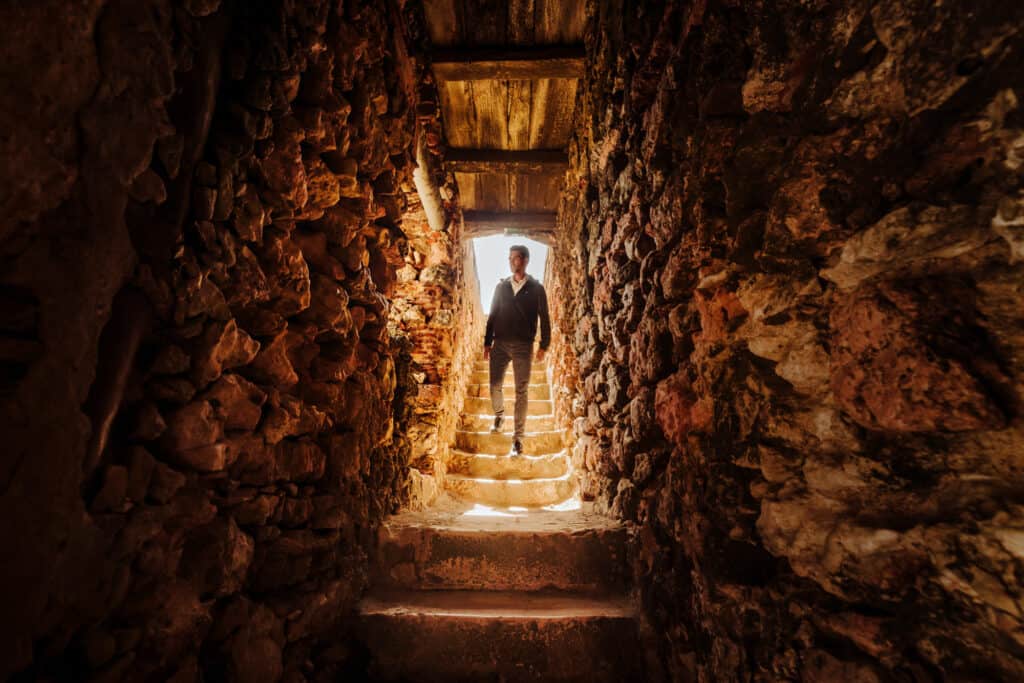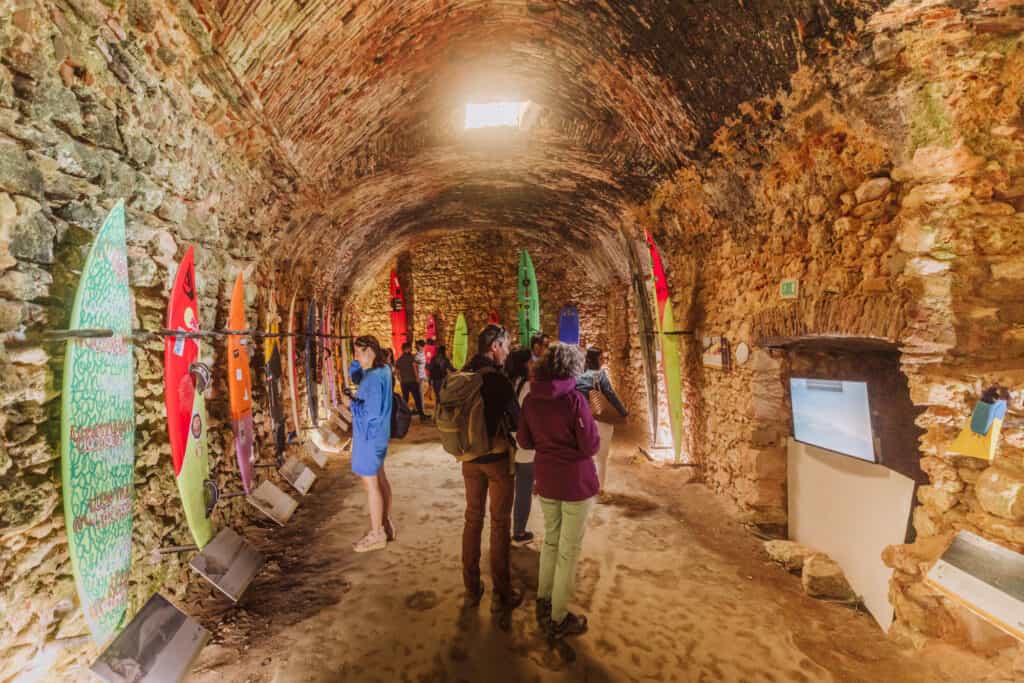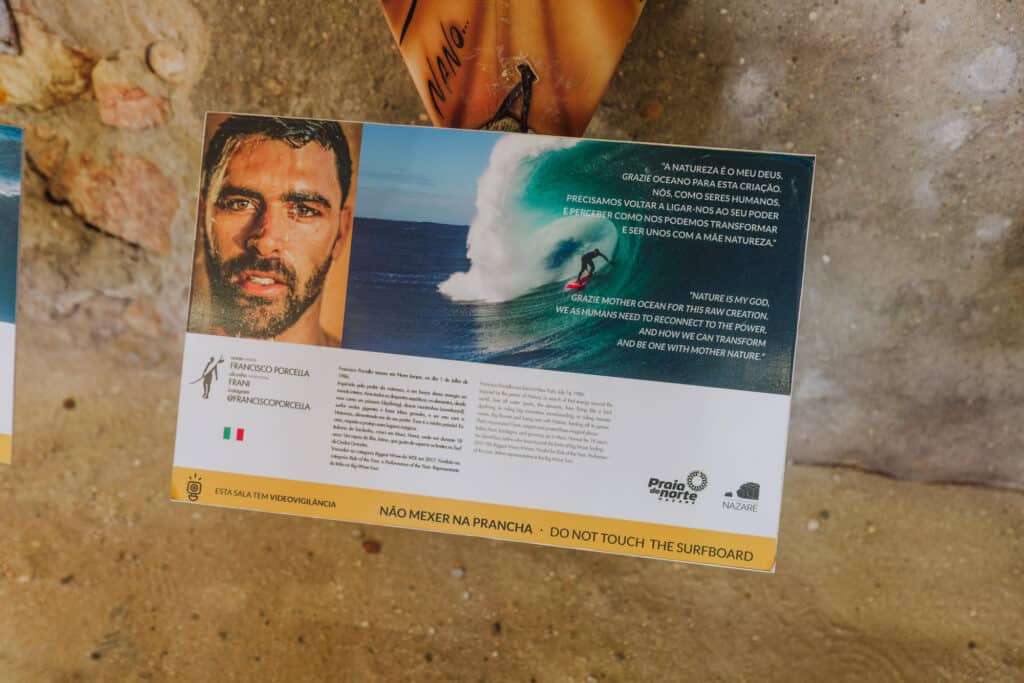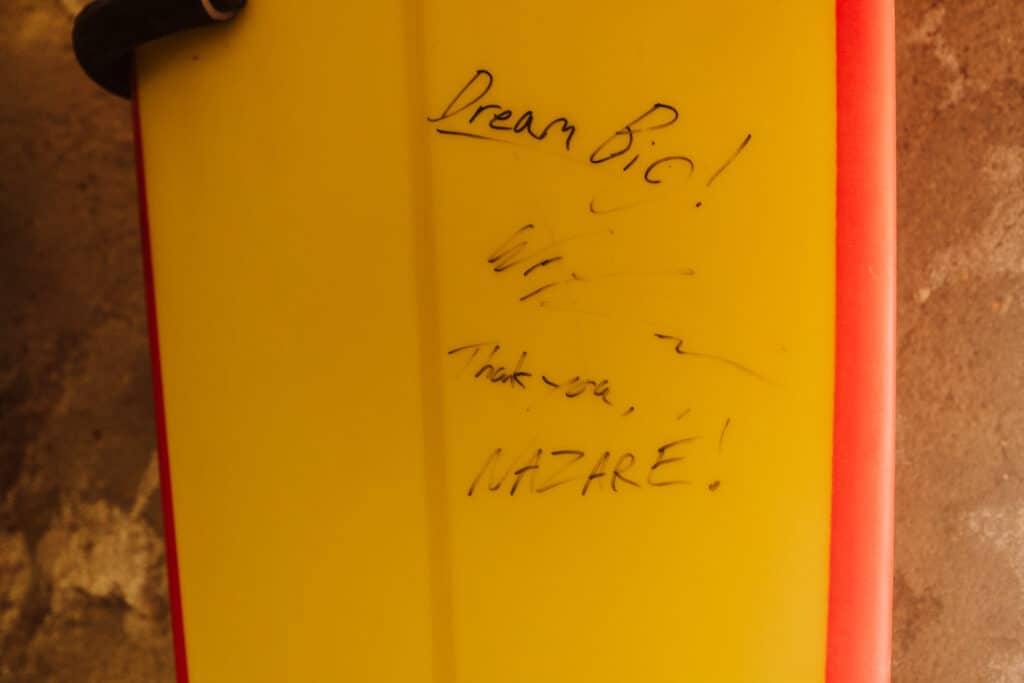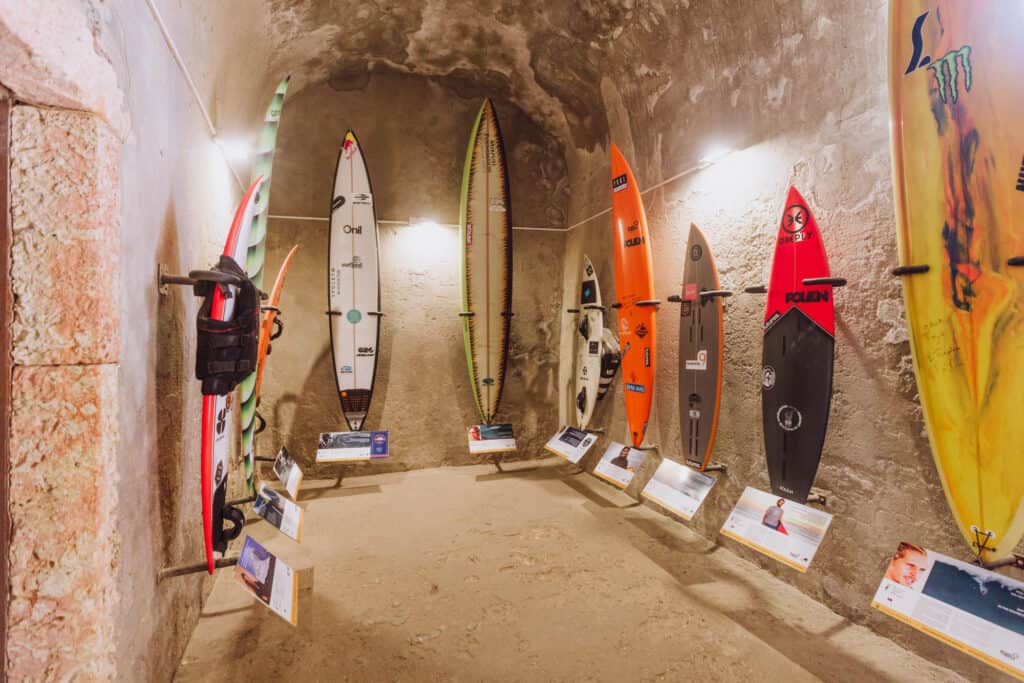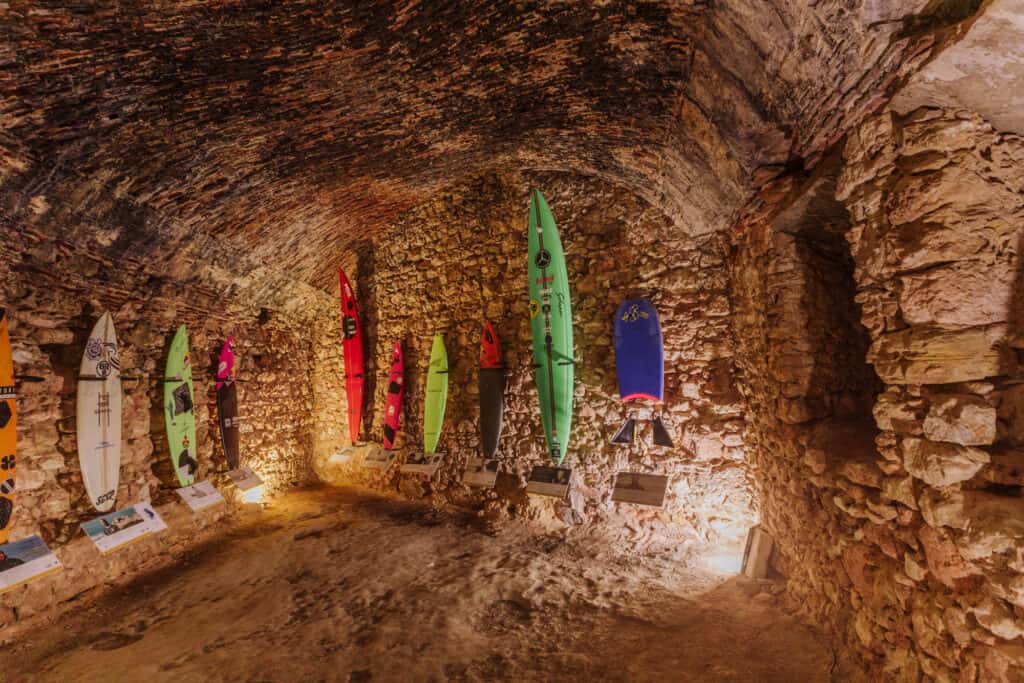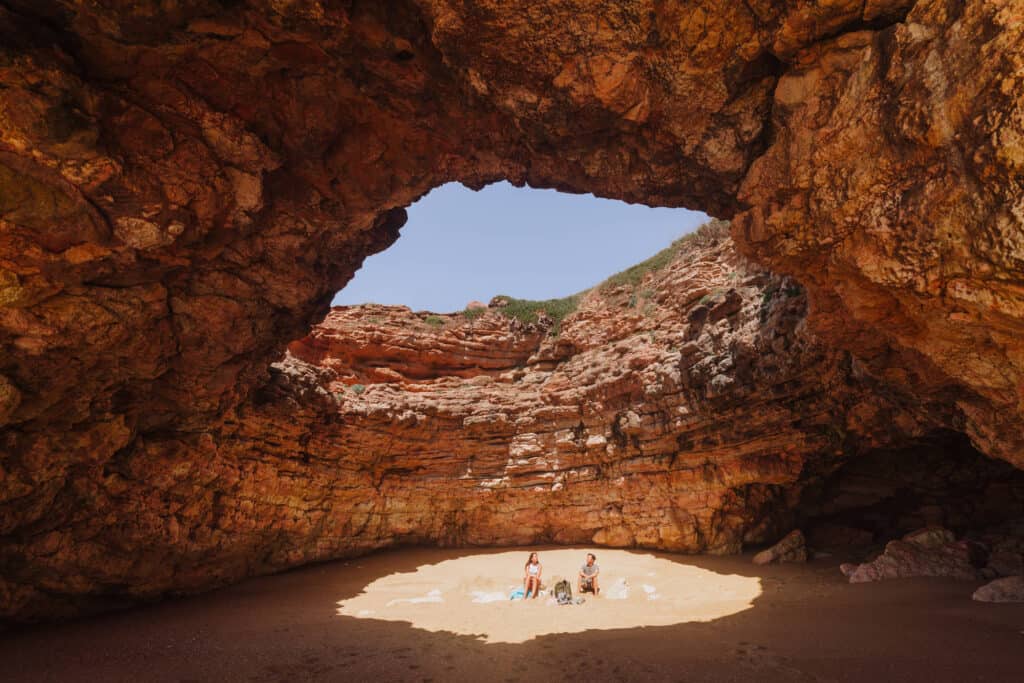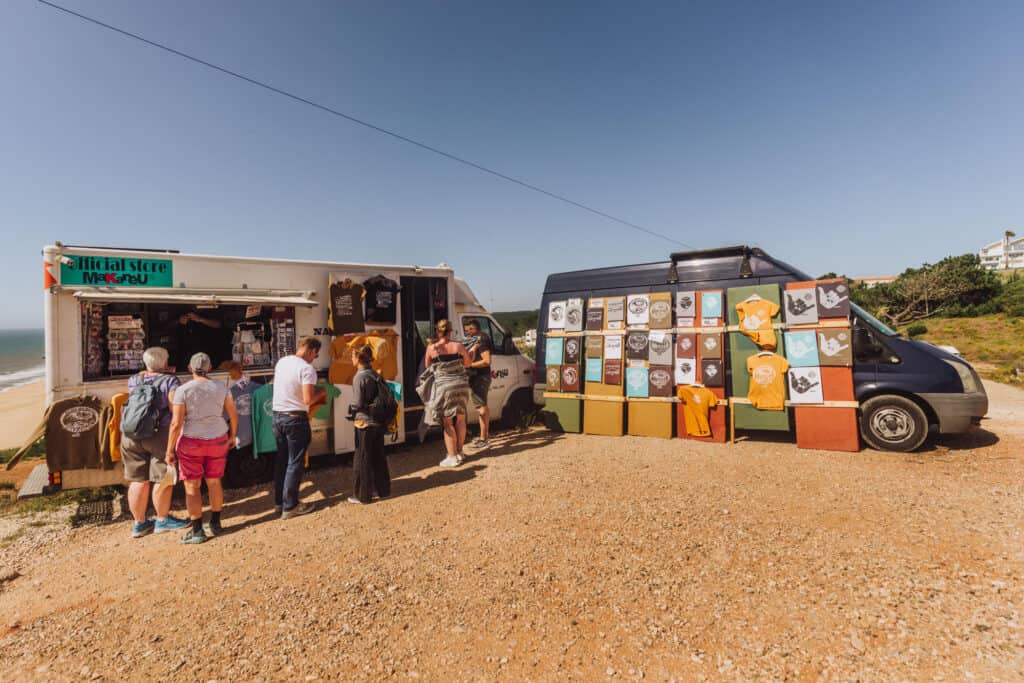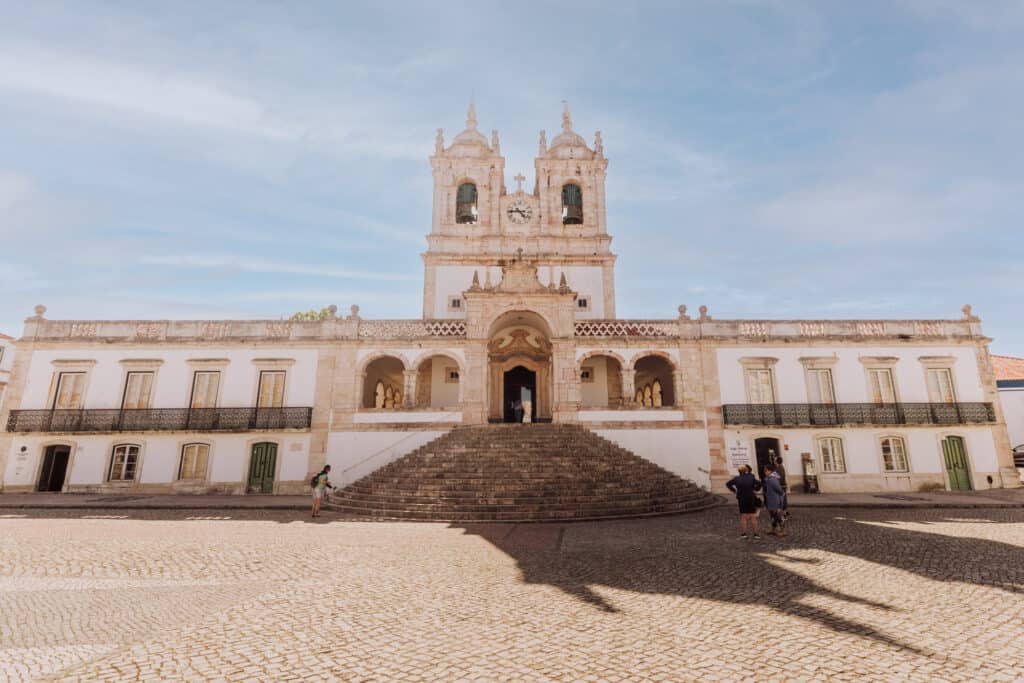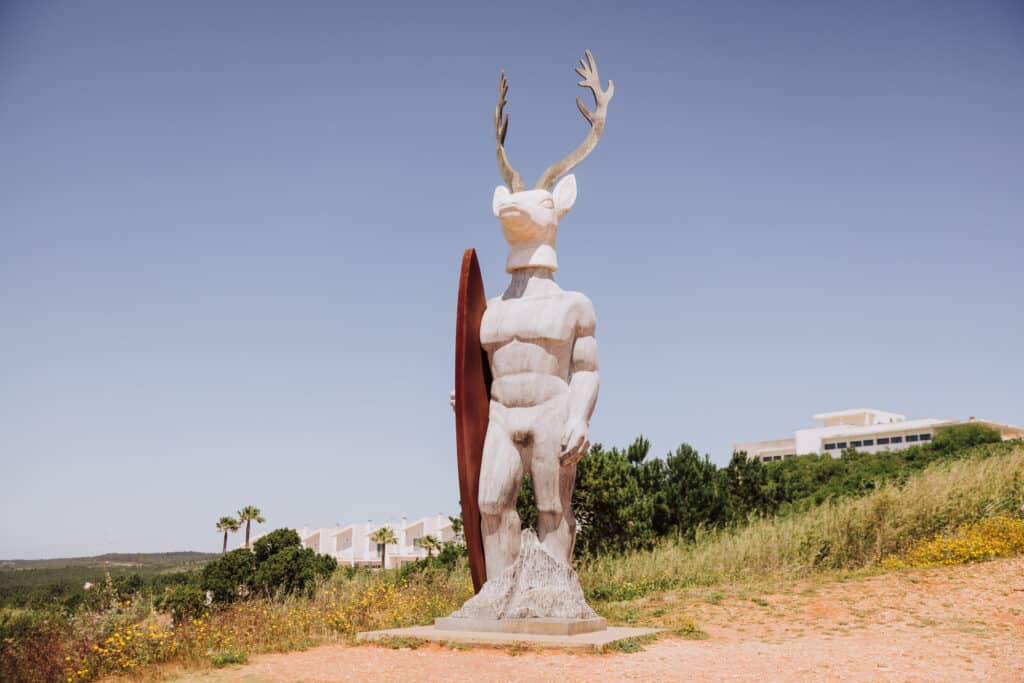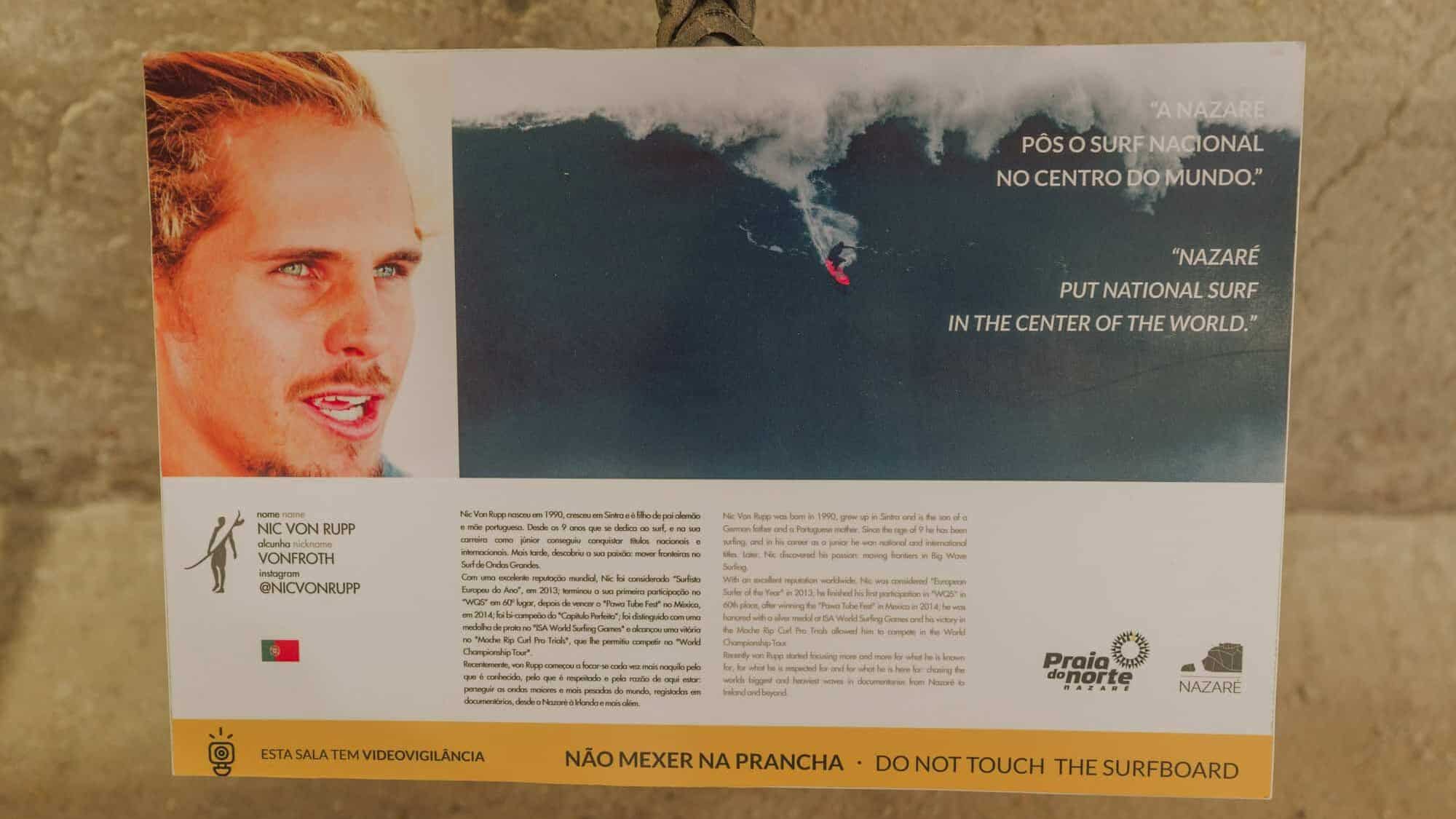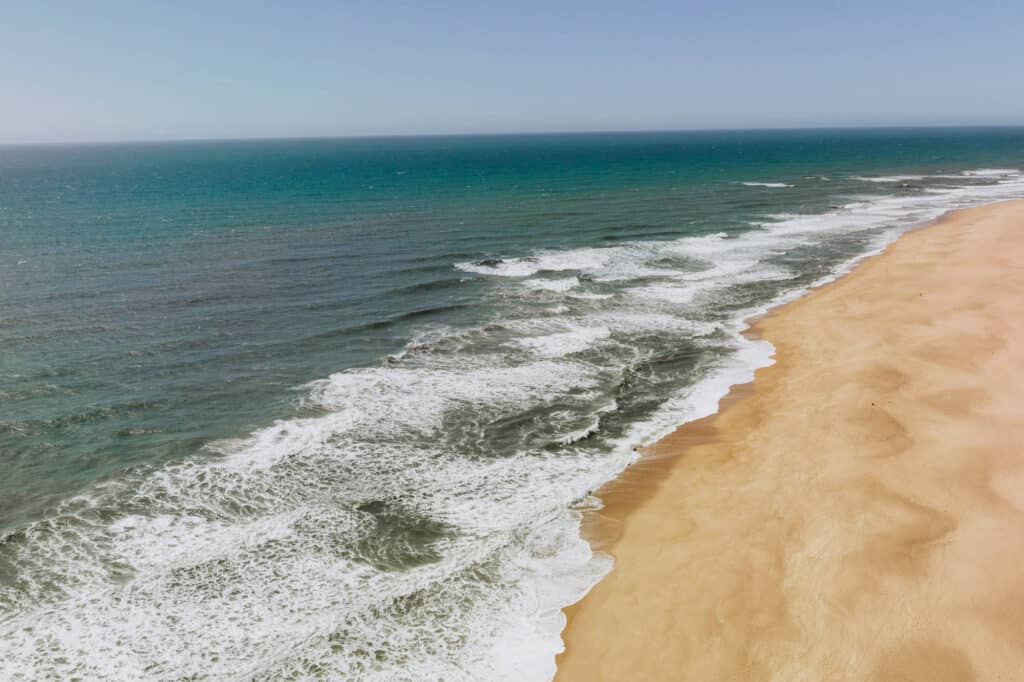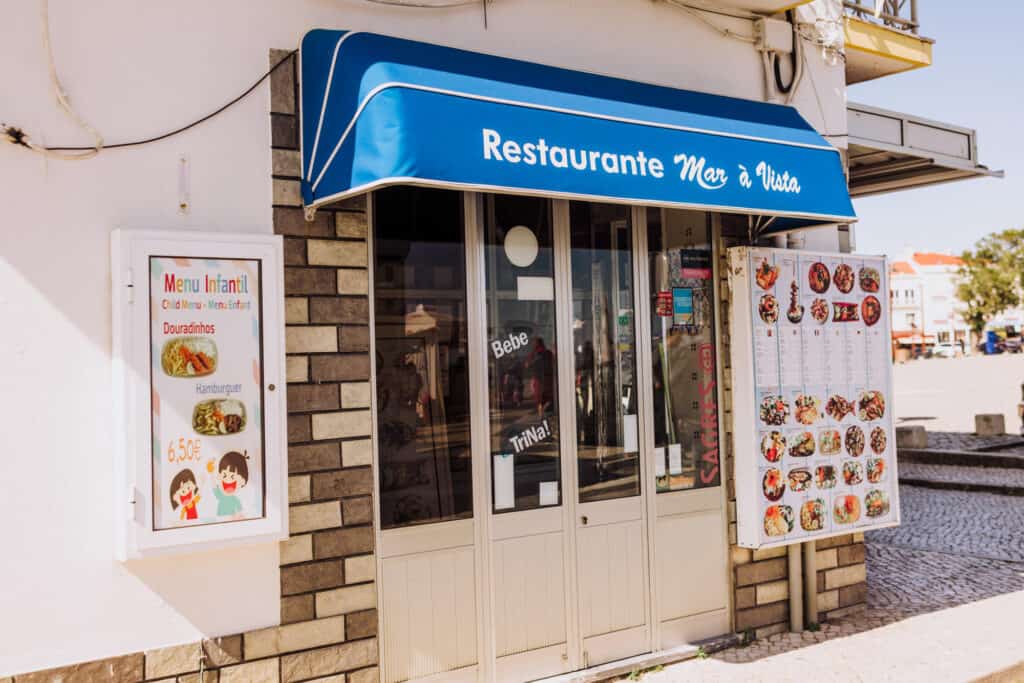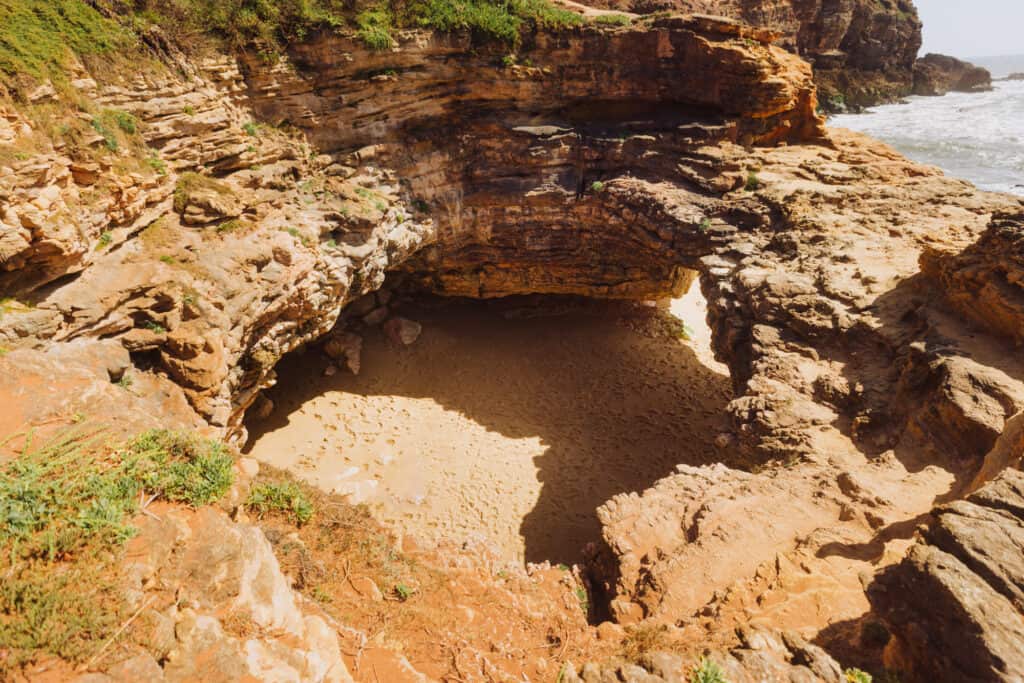Lisbon to Nazare: See the Huge Waves at Praia do Norte
BY JARED DILLINGHAM
HOW TO GET FROM LISBON TO NAZARE, PORTUGAL
It’s very easy to get from Lisbon to Nazare, to visit its famous beach: Praia do Norte.
Renting a car and driving to the town on Portugal’s central coast is the best option. Nazare is approximately 120 kilometers (75 miles) north of Lisbon.
Praia do Norte is known for its giant waves that attract surfers from around the world. In fact, Nazare holds the world record for the largest wave ever surfed, with a height of 80 feet!
As a side note, the correct spelling of Nazaré has the accent on the “e,” but American keyboards don’t have that as an option during a quick search. So … I’ll be using the spelling of the city that’s more apt to come up in searches from the United States. I apologize for the inconsistency!
How to Get from Lisbon to Nazare
Nazare’s close proximity to Lisbon makes it a perfect day trip. A rental car will get you there in a little over an hour. A bus ride will take twice as long, but cost far less.
Unfortunately, trains aren’t a great option for this day trip.
Rent a car for a day trip from Lisbon to Nazare
While renting a car while in Lisbon isn’t necessary for the entire trip, it will definitely help if you’d like to take a day trip to Nazare.
The drive will take between 60 and 90 minutes.
🚙 CLICK HERE to Search Rental Cars
It’s important to note: you don’t have to rent from the airport in Lisbon! If you’re staying in a hotel downtown, it’s probably easier to rent from one of the rental car locations in the central part of the city.
Hertz, Sixt, and other rental companies have smaller locations in a cluster in the city center. Discover Cars makes it easy to search them all at once time.
Here are a few tips about renting a car in Lisbon for a day trip to Nazare:
- You can rent the car downtown and return it at the airport for no extra fee (since the airport return area is open 24/7).
- Make sure to ask for an automatic transmission (if that’s what you prefer) since most rentals will be manual.
- You’ll pass through toll booths, so get a rental with a device that allows you to pass through without stopping. You’ll simply pay the tolls later.
Also, reserve your rental car in Lisbon in advance and you’ll pay far less. Due to a change in our itinerary, we reserved our Nissan Juke the morning of our day trip to Nazare, and rather than $50, it cost $170 for the day.
Directions from Lisbon to Nazare
Once you’re out of the city, it’s a straight shot up a highway, A8 from Lisbon to Nazare. It’s an easy drive, which will take you through a few short tunnels.
It’ll be a 100-kilometer drive north/northwest from Lisbon to Nazare on a six-lane highway. The speed limit is around 120km per hour.
You’ll pass several toll booths, and again: it’s easiest if your rental car is equipped with a device that allows you to use the lanes marked with a green “V.” A license plate reader will charge your credit card a few days after your trip.
Lisbon to Nazare on the Train
While trains will get you to other great destinations easily from Lisbon, like Sintra and Obidos, there is no train line to Nazaré.
You’ll have to take a combination of a train and a bus to get from Lisbon to Nazare. The entire ride will take longer than two hours.
Here is a common route:
- Take a train from Lisbon’s Santa Apolónia or Oriente station to the city of Leiria. That train ride will usually take 90 minutes.
- In Leiria, you will need to transfer to a bus to get to Nazare. Buses from Leiria to Nazare are operated by the Rodoviária do Lis bus company. The bus ride from Leiria to Nazare takes at least another half-hour.
The Bus from Lisbon to Nazare
You’ll find cheap bus tickets to get from Lisbon to Nazare on the FlixBus. The ride will be less than $10 each way, so it’s a pretty incredible deal.
Generally, the FlixBus runs several times a day from Lisbon’s Oriente Station to Nazare.
The first bus out in the morning usually leaves at 8:00am, and the ride is usually 90 minutes.
Buy your tickets ahead of time on the FlixBus website.
Day Trip Tours from Lisbon to Nazare
On a day trip to Nazare from Lisbon, you can combine some beach time with shopping, and a walk down to the famous viewpoint where the biggest waves in the world crash against the shore.
If you’d rather have someone else do the driving for you, there are a number of day trip tours to Nazare from Lisbon to choose from.
Tours from Lisbon to Nazare
The day trip tours from Lisbon usually include stops in Nazare, plus the beautiful medieval hilltop town of Obidos!
➡️ CLICK for Tour: Nazare & More
- Small-group guided day trip from Lisbon to Fátima, Óbidos and Nazaré.
➡️ CLICK for Tour: Private Driver to Nazare
- Private tour of Fátima, Óbidos and Nazaré from Lisbon.
➡️ CLICK for Tour: Private Tour from Lisbon
- Private tour of Fátima, Óbidos and Nazaré from Lisbon.
Hotels in Nazare
If you’re looking to spend more time on the beach, or going for several days hoping to see the big waves, this interactive map will show you options for hotels and rentals in Nazare:
What to do in Nazare, at Praia do Norte
The big draw in Nazare is Praia do Norte, the famous beach with some of the biggest (if not the biggest) waves in the world.
Nazare itself is a pretty sizable beach town with plenty of things to do on a day trip from Lisbon.
If you wander down toward the fort (which most do) remember that there are no bathrooms at all along the hike.
The Beaches in Nazare
There are several named beaches in Nazare, but the coastline is essentially broken in half by the land that juts out into the sea, where the old fort is.
While they share the same stretch of Portugal’s coast, these two sections of beach are very different in a number of ways.
Praia do Norte
This is the beach in Nazare with much larger waves, north of the fort.
You can access Praia do Norte by several paths, including a fairly steep, dirt trail down from the fort overlook.
The beach itself is nice and clean, with interestingly grainy sand. There are signs warning of the dangers of swimming here. You’ll find more space to spread out here, compared to the more crowded beaches south of the fort.
You won’t find much in the way of food or services here. It’s a much quieter beach experience than the more populated Praia da Nazare.
Praia da Nazare
The ocean water at Praia da Nazare is much calmer, so it’s more popular for sunbathers and families to visit. This is where you’d want to head to swim in the ocean (unless you’re a pro surfer).
The ocean floor off the coast (Nazare Canyon) creates very smooth ocean conditions and small waves on this beach, on the southern side of Nazare.
You’ll find beach clubs and free public beaches, and several restaurants along the coast.
Take a Tuk-tuk
If all the walking is too much, or the hills are too steep, you can jump in one of the tuk-tuks that are all over town.
They’re primarily there to get you down to the ancient fort, which is the present-day popular viewing platform for the big waves and surf competitions at Praia do Norte.
Nazare’s Viewpoint: Fort de São Miguel Arcanjo
Forte de São Miguel Arcanjo, also known as the Fort of Saint Michael the Archangel, is a historical fortress located above the beach (Praia do Norte).
From its location, you can see the impact of the underwater canyon off the coast. It produces large waves to the north, and much calmer water to the south. For 2 Euros, you can go inside the fort, climb around and check out the views of Nazare’s beaches and the ocean waves.
While it’s primarily a viewpoint for the waves and surf competitions these days, it played a role in defending the coastal region throughout history.
Nazare’s fort dates back to the 16th century, and was constructed during the reign of King Manuel in 1577. Its primary purpose was to defend Nazare against pirate attacks and protect the town from maritime threats.
The fort was equipped with canons, and had thick walls to withstand attacks. It served as a watchtower, providing a line of sight for spotting approaching ships.
Surfing Museum
Unexpectedly, Nazare’s fort contains a pretty extensive collection of surfing memorabilia. You’ll also find a lot of scientific information about the natural forces behind the giant waves.
Some of the ancient rooms now hold the surfboards of professionals who’ve conquered Nazare’s waves. Several have written notes and anecdotes about the waves here, and how they’re different from anywhere else.
This is officially called “Surfer Wall,” an exhibition created in 2016, but Nazare city officials.
The Rocky Caves
You can hike the dirt path down below Nazare’s fort to the beach on the north side. It’s a steep climb at times, but most people will be able to do it.
At low tide, you’ll find caves in the rocks to explore. Just beware of the waves as the tide starts to rise!
The adjacent beach is Praia do Norte.
Food in Nazare
At the top of the road that leads down the fort and viewpoint, you’ll find plenty of food options.
Arimar is a restaurant offering floor-to-ceiling window views of the ocean.
For something less-formal, there are a number of food trucks and mobile bars offering meals, snacks, and drinks.
You’re also bound to find local families selling nuts and cookies and other Portuguese snacks in the plazas around Nazare.
Souvenirs
The plazas in Nazare are lined with typical souvenir shops. You’ll also find vendors in trucks selling surfing-specific shirts and gear down closer to the water.
The Sanctuary of Our Lady of Nazaré (Santuário de Nossa Senhora da Nazaré)
The Sanctuary of Our Lady of Nazaré, or in Portuguese, Santuário de Nossa Senhora da Nazaré, is a renowned Catholic pilgrimage site in Nazare, which is dedicated to the Virgin Mary.
The sanctuary’s origins trace back to a miraculous event that occurred in the 12th century. Legend has it that a knight named Dom Fuas Roupinho was hunting in the area when his horse nearly plunged off a cliff. In a moment of desperation, he called upon the Virgin Mary for help, and she saved him. As a result, a small chapel was built on the spot in gratitude, eventually growing into the sanctuary we see today.
It draws pilgrims from around the world. You’re likely to see tour buses whenever you visit, but each year on September 8th, thousands come for processions and masses.
Veado
This is a marble and steel statue, 20 feet tall, built in 2016.
It’s part of the legend from the 12th Century involving the knight who fell off the cliff. After asking the Virgin Mary for help, the horse stuck its legs down off the cliff, saving the knight’s life.
I believe the sculptor created this anthropomorphic statue to represent the old story involving the knight hunting for deer, and Nazare’s modern claim to fame as a surfing Mecca.
The Massive Waves at Nazare’s Praia do Norte
Nazare’s Praia do Norte (North Beach) gained global recognition for its massive waves.
These waves are formed due to the underwater Nazaré Canyon, which channels and amplifies the swells, creating some of the largest surfable waves on the planet.
In fact, Nazare holds the world record for the largest wave ever surfed, with a height of approximately 24.38 meters (80 feet), ridden by the Brazilian surfer Rodrigo Koxa in 2017.
Why are the waves at Nazare’s Praia do Norte so big?
Off-shore, the underwater Nazare Canyon channels and amplifies the swells.
The canyon reaches depths of more than 5,000 meters (16,400 feet). As waves approach the coast, they encounter this underwater topography, which causes the wave energy to concentrate and amplify. The shape and orientation of the canyon channel the incoming swells, resulting in the formation of massive waves.
Another important factor is the convergence of swells from the Atlantic Ocean.
Nazare is uniquely positioned to receive swells generated by storms in the North Atlantic. When these powerful swells travel across the ocean and reach the shallow waters near the coast, they undergo a process called shoaling. As the depth decreases, the energy of the swells is compressed, causing the waves to increase in height and steepness.
You can learn about all of it inside the fort!
When are the big waves at Nazare’s Praia do Norte?
The largest waves at Nazare are typically observed during the winter months, particularly between the months of October and February. This is when the combination of powerful Atlantic storms and the unique underwater Nazare Canyon results in the formation of exceptionally large waves.
The specific timing and size of the waves can vary depending on various factors, including weather patterns, swell direction, and tidal influences. To accurately determine the biggest waves at Nazare, it is recommended to monitor surf reports, local forecasts, and updates from professional surfers and oceanographers who closely follow the wave conditions in the area.
How to see the giant waves at Nazare’s Praia do Norte
It’s unpredictable, and if you’re really committed to witnessing the famous Nazare waves, you should plan to stay in the area for several weeks. Keep monitoring forecasts and webcams, from November through February for your best chances.
The annual WSL Nazaré Big Wave Challenge surfing event is every year during the winter. The exact dates aren’t chosen or confirmed until 48-hours before the start of the competition.
A surfer died surfing the waves at Nazaré
The 2023 surfing season began with tragedy at Nazare. The famous Brazilian surfer Márcio Freire died after a fall while being towed into a wave. Rescuers pulled him to shore, but couldn’t revive him.
Tourists have also been pulled from shore by the waves.
Here are some of the safety measures typically in place:
- Trained lifeguards are often present on the beaches in Nazare, especially during the peak tourist season.
- Beaches in Nazare usually have clear signage that alerts visitors to the potential risks and dangers associated with the surf conditions.
- In some areas, there may be safety barriers or buoys installed to mark safe swimming zones and prevent swimmers from venturing into hazardous areas with strong currents or dangerous surf conditions.
- Local authorities and beach patrols often monitor the beaches to ensure compliance with safety rules, educate visitors about potential risks, and intervene if necessary to enforce safety measures.
Where are the biggest waves in the world?
The biggest wave ever surfed was in Nazare, Portugal. Here are the other spots to find the biggest waves in the world:
- Jaws (Peahi), Maui, Hawaii: Located on the north shore of Maui, Jaws is renowned for its massive, powerful waves that can reach heights of up to 60 feet (18 meters).
- Teahupo’o, Tahiti: Teahupo’o, Tahiti, French Polynesia, is known for its hollow and powerful waves that break over a shallow coral reef.
- Mavericks, California, United States: Mavericks is located near Half Moon Bay in Northern California and is notorious for its colossal and dangerous waves that can reach heights of over 60 feet (18 meters).
- Cloudbreak, Tavarua, Fiji: Cloudbreak is a world-class left-hand reef break in the South Pacific that produces powerful and consistent waves. It is known for its thick barrels and can reach heights of up to 20 feet (6 meters).
- Waimea Bay, Oahu, Hawaii: Waimea Bay is a legendary big wave spot on the North Shore of Oahu, Hawaii. It is home to the famous “Eddie Aikau Big Wave Invitational” surf contest, held only when waves consistently reach a minimum height of 20 feet (6 meters).
Nazare Waves Live Webcam
There are several webcams setup along the beach in Nazare for surf enthusiasts to monitor current conditions.
CLICK HERE for a link to a few.
What Else is Nazare Known For?
The town of Nazare has a rich history and is known for its strong connection to Portuguese traditions and customs. The local economy primarily revolves around fishing, tourism, and the surf industry. Fishing boats, painted in vibrant colors, can be seen along the coast, and the local fish market is a popular spot for both locals and visitors.
Apart from its natural beauty and surf culture, Nazare is also known for its charming old town, featuring narrow streets, colorful houses, and a lively atmosphere.
Nazare is a popular tourist destination, attracting visitors not only for its waves but also for its cultural heritage, delicious seafood cuisine, and warm hospitality. It offers a range of accommodations, restaurants, and shops, allowing visitors to experience the unique blend of traditional and modern aspects of the town.
Nazare FAQs
How Far is Nazare from Lisbon?
It’s 120 kilometers south from Nazare to Lisbon. The drive should take around 90 minutes, unless there’s construction traffic. It’s pretty much a straight shot south on Highway A8 into Lisbon.
How Far is Nazare from Porto?
It’s 215 kilometers north from Nazareto to Porto. The drive should take around two hours, unless there’s construction traffic. You’ll take highways A8, A17, and A1.
How do you get from the Lisbon Airport to Nazare?
If you’re renting a car at Humberto Delgado Airport in Lisbon (LIS), it’s an easy 90-minute drive to Nazare.
There are two possible routes, so check traffic when you get there in case one of the highways is undergoing construction.
Right out of the airport, you’ll most likely take the highway A36 to the A8 northbound. It’ll bring you straight to Nazare.
Remember, you’ll pass several toll booths along the way so make sure your rental has a digital pass for the easy-pass lanes.
Have tourists died or drowned from the waves at Nazare?
Unfortunately, there have been incidents where tourists have lost their lives at Nazare. The powerful waves and challenging surf conditions in Nazare can pose significant risks to both experienced and inexperienced surfers, as well as spectators near the shore.
The massive waves and strong currents can be unpredictable and dangerous.
Wrap: Is Nazare, Portugal, Worth Visiting?
Admittedly, Nazare wasn’t on my original list of day trips from Lisbon. We only ended up there toward the end because we had some extra time. But I’m glad we did!
I’m not a surfer, but I found the information about Nazare Canyon and the waves really fascinating. The town itself is very pretty, too.
During the summer, I could easily spend a day lounging on the beaches. If you’re just looking to check out the fort and the waves and move on, I’d combine a day trip to Nazare with a stop at nearby Obidos!
